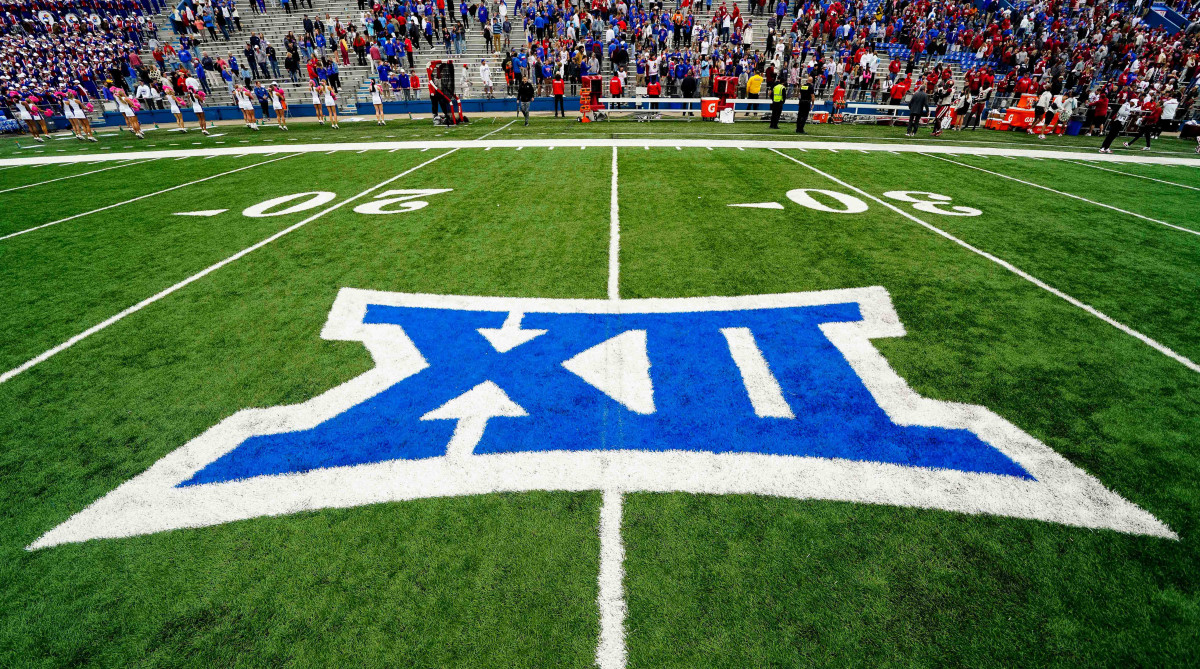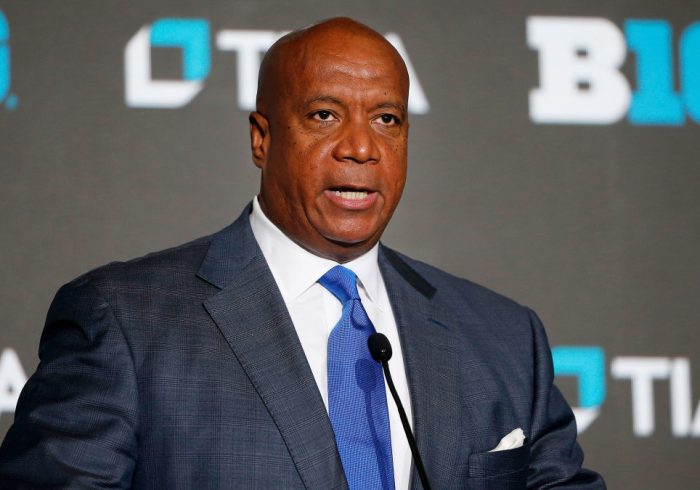Imagine the University of Texas playing a conference game at Houston. Or Cincinnati hosting Oklahoma in a league affair.
In a scheduling model expected to be adopted by the Big 12, this is a distinct possibility.
The league is finalizing a future scheduling format that features no divisions, protects long-standing rivalries and includes Texas and Oklahoma in both the 2023 and ’24 seasons.
Conference executives agreed to the temporary, two-year format during meetings earlier this week in Dallas, sources tell Sports Illustrated. They have not officially adopted the model and are still finalizing details. For months now, Big 12 officials have been engrossed in deep discussions about a scheduling format for 2023 and ’24, when the conference swells to 14 members with the additions of Cincinnati, UCF, BYU and Houston.
In the targeted format, conference members will continue to play nine league games in a divisionless model with the top two teams advancing to a championship game. The two-year format is set up for each team to play all others at least once. Historic rivalries are expected to be preserved on an annual basis with teams having permanent opponents. Those matchups are not yet official, but are likely to include games such as Oklahoma-Texas, Oklahoma State-Oklahoma, Kansas-Kansas State, TCU-Baylor and West Virginia-Cincinnati, the latter a natural regional matchup.
The Big 12 will drop from 14 to 12 teams when Oklahoma and Texas leave for the SEC, a move that is scheduled for 2025. Though many believe UT and OU’s exit could happen as soon as 2024, their inclusion in the temporary two-year scheduling format suggests that the conference is moving forward with the expectation that they will stay in the league for the remainder of the grant of rights. The Big 12 Grant of Rights expires after the 2024-25 academic calendar.
Leaving a year early would require the two schools to pay a cumulative, estimated price tag of more than $100 million. The schools already owe the league a mandatory exit fee of $80 million each. The exit fee, stemming from an agreement they made years ago, is required even if they stay through the grant of rights. However, officials are in the midst of on-going negotiations over the exit fee.
Some thought the Sooners and Longhorns could negotiate an earlier exit stemming from the league’s new media rights deal. Commissioner Brett Yormark is leading the conference through negotiations with both FOX and ESPN on a new television contract. Those discussions have accelerated, officials say. Yormark told the Associated Press earlier this week that he has had “meaningful” conversations with ESPN and Fox.
Any deal is expected to include a clause that may incentivize the conference to grow again. Additional teams joining the league would receive a pro-rata share. Yormark has not been shy about his desire to add programs. The league has targeted several members of the Pac-12 South, most notably Arizona, Colorado, Arizona State and Utah, as potential additional expansion candidates.
These schools’ decision to join the Big 12 likely hinges on the particulars of their own league’s new television contract. The Pac-12 is in the process of negotiating its own new deal. Each conference’s annual distribution is at the core of the issue. The Big 12 paid out $43 million to its members last year while the Pac-12 paid out $33 million. Projections of their new TV deals range widely.
Those in the Big 12 claim their distribution could be as much as $10 million more than the Pac-12’s projected payouts. Pac-12 officials, trying to preserve their own league, say those projections are inaccurate and that their league is more valuable.
In the background of the Pac-12 vs. Big 12 territorial battle is an inquisitive Big Ten, whose commissioner has publicly expressed an interest in continuing to expand his footprint. It’s no secret that Kevin Warren’s most likely targets are several schools from the Pac-12 North, including Oregon, Washington, Cal and Stanford, bunching those four with USC and UCLA for a potential six-team West Coast wing.
That said, earlier this week during Big Ten media days, Warren tempered any expectation on expansion, saying that the focus is instead on USC and UCLA’s impending arrival.
More College Football Coverage:



